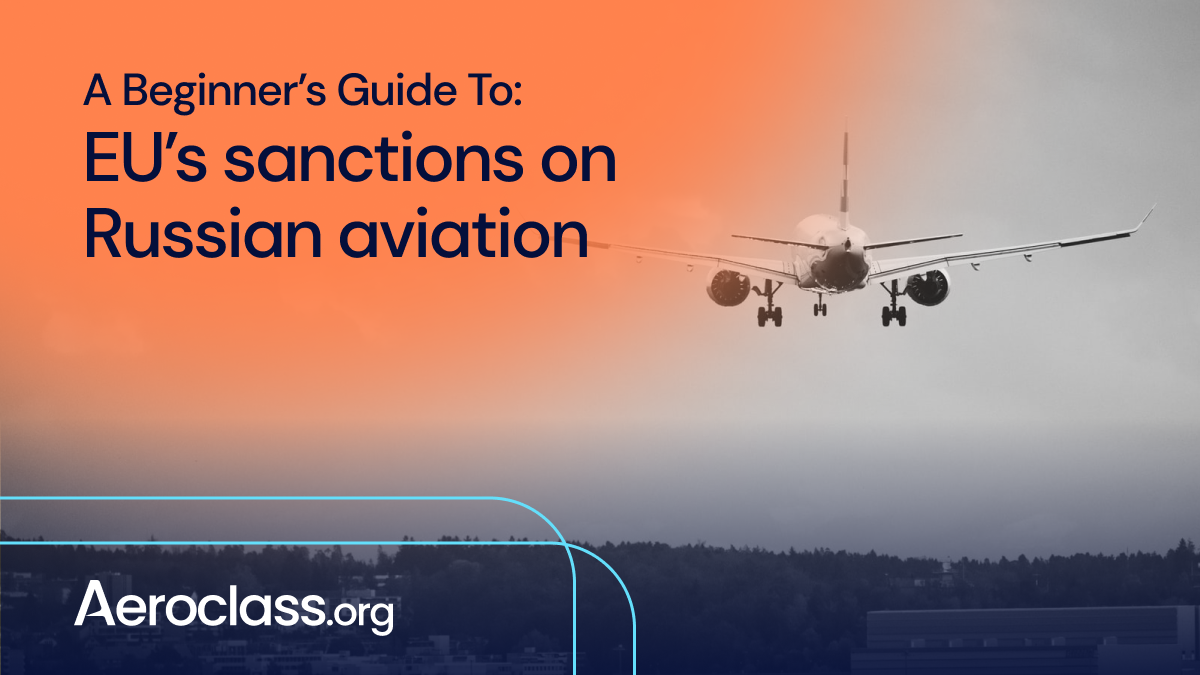The aerospace market is not only one of the most visible sectors affected by European sanctions on Russia. As it was among the first to be affected, some developments, as well as the early consequences already, can be clearly seen.
The aviation sector was one of the first to be included in the earliest package of restrictive measures as the sanctions were imposed by Western countries on Russia following the country’s invasion of Ukraine. However, some developments in the skies of Eastern Europe were already visible even prior to the start of the offensive as carriers across the continent began to ground their flights in the region and countries started to close their airspaces to Russian airlines immediately after the start of the invasion.
And even before the almost complete closure of European skies to Russian carriers which was imposed by one country after another, the first batch of sanctions on the EU level completely restricted selling aircraft and airplane parts into Russia – which recently was completely dependable on Western-made jets and its components. Even the only well-known Russian-made commercial jet, Sukhoi Superjet 100, accounts for 55–60% Western-supplied parts, according to its original design.
The biggest Western plane manufacturers are already altering their plans and operations according to the current situation – after closing its office in Kyiv until further notice, Boeing has also put on hold its pilot training activities at the Moscow campus. Airbus, on its part, has already issued a statement, in which it says that it is yet premature to comment on the impact of the sanctions, however, adding that it already has 14 A350s destined for Aeroflot and around 40 single-aisle (A220 and A320 family) planes to be delivered through lessons.
In total, there are almost 780 planes on a lease that are or recently were operated by Russian airlines, as of today, including 515 from foreign lessors. Some 425 of these are most at risk of being seized by an appropriate institution or taken back by their lessors, therefore Aeroflot and other carriers based in the country are avoiding taking them out of the country, according to the experts.
It is also worth highlighting that both Airbus, as well as Boeing, are receiving some materials needed in their manufacturing facilities directly from Russia. Yet, the most important of them being titanium, there is still a choice of suppliers from other parts of the world. As Airbus said in its statement: “Geopolitical risks are integrated into our titanium sourcing policies. We are therefore protected in the short/medium term.”
Another obvious problem regarding the current situation is overflight cash. After announcing that it would restrict flights in its airspace to dozens of countries, Russia made long-haul flights that were previously crossing the country’s airspace significantly longer.
By doing that, Russia not only increased flight times for long-haul carriers but made itself missing out on cash that until recently was helping to fund its state carrier, Aeroflot. And that is a significant amount of cash as Russia is known for charging particularly high fees. For example, the figures from 2008 (the most recent publicly available data), show EU carriers were paying it at least $420 million per year.
And as flight paths just became longer, airlines are already rethinking their routes, as with the available fleet, even after some destinations and certain capacities on specific routes were cut, a lot of carriers are still more likely to need to make refueling stops.
In an interview with Telegraph, Emirates President Tim Clark already said that the most acute issue is the carrier’s flights to the west coast of the United States, which usually go through Russian airspace. “If push comes to shove, we can still fly,” he said but added that it could require a stop in Europe to refuel.
Anchorage airport in Alaska, which was a major refueling spot for Europe-to-Asia flights during the Cold War, has been receiving calls from airlines. However, what was completely understandable almost half a century ago isn’t something both airlines and passengers are used to today. That extra stop would add a substantial amount of time: Going polar, according to aviation analyst John Walton, would add five-and-a-half hours to a Beijing to Helsinki flight that currently takes eight hours, beyond the range of some airplanes which were previously covering that route.






